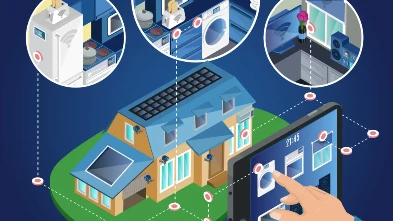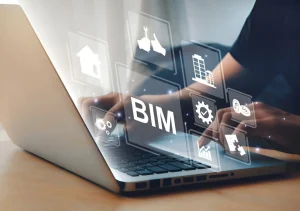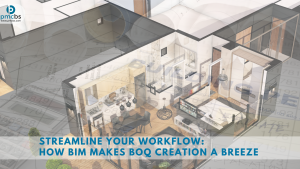Are you prepared to revolutionize your facility management practices? The future of Facilities Management (FM) is here, and it’s powered by Building Information Modeling (BIM). In this guide, we’ll explore how BIM is transforming the landscape of FM, from preventive maintenance to space management. Get ready to unlock the full potential of your facilities with BIM!
Table of Contents
Understanding BIM for Facilities Management
Building Information Modeling (BIM) is a digital representation of physical and functional characteristics of facilities. It goes beyond traditional 2D drawings, providing a collaborative platform for stakeholders to visualize, design, construct, and manage facilities throughout their lifecycle.
BIM for Preventive Maintenance
Proactive Facility Management
BIM enables proactive preventive maintenance by providing real-time insights into asset condition, performance, and maintenance history. Predictive analytics and condition-based monitoring help identify potential issues before they escalate, minimizing downtime and costly repairs.
Digital Twin Technology
With BIM, facility managers can create digital twins of their facilities, virtual replicas that mirror physical assets and systems. Digital twins facilitate simulation, testing, and scenario planning, allowing managers to optimize maintenance strategies and extend asset lifespan.
Streamlining Space Management with BIM
Space Utilization Optimization
BIM facilitates space management by providing accurate and up-to-date information on space occupancy, utilization, and allocation. Facility managers can optimize space usage, identify underutilized areas, and reconfigure layouts to meet evolving needs.
Space Planning and Design
Through BIM, facility managers can visualize and simulate space planning scenarios, testing different layouts and configurations before implementation. This reduces design iterations, accelerates decision-making, and minimizes disruptions during renovations or relocations.
Enhancing Energy Efficiency
Energy Performance Analysis
BIM enables energy performance analysis by integrating building data with energy simulation tools. Facility managers can evaluate energy consumption, identify inefficiencies, and implement strategies to reduce environmental impact and operational costs.
Sustainable Design and Operations
By incorporating sustainable design principles into BIM models, facility managers can optimize energy efficiency, enhance indoor air quality, and minimize environmental footprint throughout the facility lifecycle.
Improving Asset Lifecycle Management
Asset Tracking and Documentation
BIM serves as a centralized platform for asset lifecycle management, providing comprehensive documentation and tracking of facility assets from procurement to decommissioning. This ensures visibility, accountability, and compliance throughout the asset lifecycle.
Predictive Maintenance Planning
BIM enables predictive maintenance planning by analyzing asset performance data and predicting maintenance needs based on usage, condition, and historical trends. This proactive approach minimizes downtime, extends asset lifespan, and lowers operational costs.
Integrating IoT and Sensor Technologies
Smart Building Integration
BIM integration with Internet of Things (IoT) and sensor technologies enables real-time monitoring and control of facility systems, including HVAC, lighting, and security. This integration enhances operational efficiency, improves occupant comfort, and reduces energy consumption.
Data-driven Decision-making
By leveraging real-time data from IoT devices and sensors, facility managers can make data-driven decisions to optimize building performance, prioritize maintenance activities, and enhance user experience.
Empowering Facility Managers with Data
Actionable Insights
BIM provides facility managers with actionable insights derived from data analytics, performance metrics, and predictive modeling. These insights empower managers to optimize operations, allocate resources effectively, and enhance overall facility performance.
Collaboration and Communication
BIM fosters collaboration and communication among stakeholders by providing a centralized platform for sharing information, coordinating activities, and resolving issues in real time. This enhances transparency, accountability, and efficiency throughout the facility lifecycle.
Overcoming Challenges in BIM Adoption
Cultural Shift
One of the key challenges in BIM adoption is cultural resistance within organizations. Overcoming this challenge requires leadership commitment, training, and change management strategies to foster a culture of innovation and collaboration.
Skill Gap
The skill gap is another hurdle in BIM adoption, as organizations may lack the expertise needed to implement and utilize BIM effectively. Investing in training and education programs can bridge this gap and empower staff with the skills needed for success.
Implementing BIM in Your Facility
Define Clear Objectives
Start by defining clear objectives and goals for BIM implementation in your facility. Identify key stakeholders, establish roles and responsibilities, and develop a roadmap for adoption and integration.
Invest in Technology
Invest in BIM software and technology infrastructure that align with your facility’s needs and objectives. Choose scalable solutions that offer flexibility, interoperability, and support for future growth and expansion.
FAQs: Answering Your Burning Questions
1. How does BIM enhance preventive maintenance in facilities?
BIM enables proactive preventive maintenance by providing real-time insights into asset condition and performance. Predictive analytics and digital twin technology help identify potential issues before they escalate, minimizing downtime and costly repairs.
2. How can BIM optimize space management in facilities?
BIM facilitates space management by providing accurate information on space occupancy, utilization, and allocation. Facility managers can optimize space usage, identify underutilized areas, and reconfigure layouts to meet evolving needs.
3. What role does BIM play in enhancing energy efficiency?
BIM integrates building data with energy simulation tools to evaluate energy consumption and identify inefficiencies. Sustainable design principles incorporated into BIM models optimize energy efficiency and minimize environmental impact throughout the facility lifecycle.
4. How can facility managers overcome challenges in BIM adoption?
Facility managers can overcome challenges in BIM adoption by fostering a culture of innovation, investing in training and education programs, and leveraging external expertise and support.
5. What steps should organizations take to implement BIM in their facilities?
To implement BIM in facilities, organizations should define clear objectives, invest in technology infrastructure, and develop a comprehensive implementation plan with stakeholder buy-in and support. Regular evaluation and adaptation are key to success in BIM adoption.





